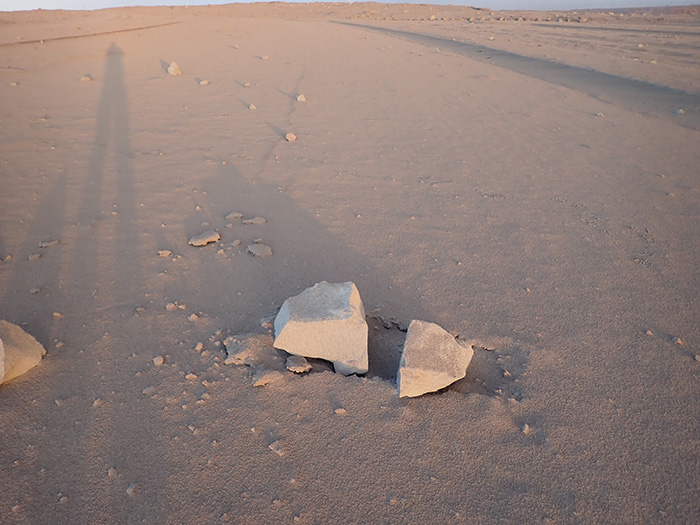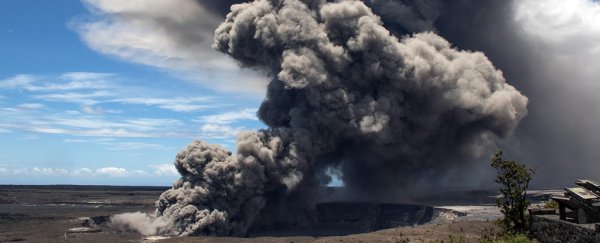The Kīlauea volcano in Hawaii began causing earthquakes on Wednesday afternoon, after morning explosions of "ballistic blocks" three times larger than bowling balls.
Earthquakes up to 4.4 magnitude have been measured after Kilauea's caldera, one of its large craters, dropped 90cm causing nearby faults to move.
According to the US Geological Survey (USGS), residents and employees at the Hawaiian Volcano Observatory have reported "frequent ground shaking and damage to roads and buildings".
Cracks have also emerged on Highway 11, though they were still passable as of this writing.
The earthquakes are expected to continue and become more frequent, but because of their shallow depth will be more damaging to the nearby region.
Earlier in the day, ballistic blocks up to 60cm were found in a parking lot hundreds of metres from Kīlauea's Halemaumau crater.
 Close-up of one of the rocks thrown from the crater, covered in ash. (USGS)
Close-up of one of the rocks thrown from the crater, covered in ash. (USGS)
"These reflect the most energetic explosions yet observed and could reflect the onset of steam-driven explosive activity," USGS said.
"Additional such explosions are expected and could be more powerful."
Lava outbreaks are also still possible.
On Tuesday, the volcano's warning system was raised to it its highest level because of the risk to aviation from increased emissions and heights of ash clouds.
This article was originally published by Business Insider.
More from Business Insider:
